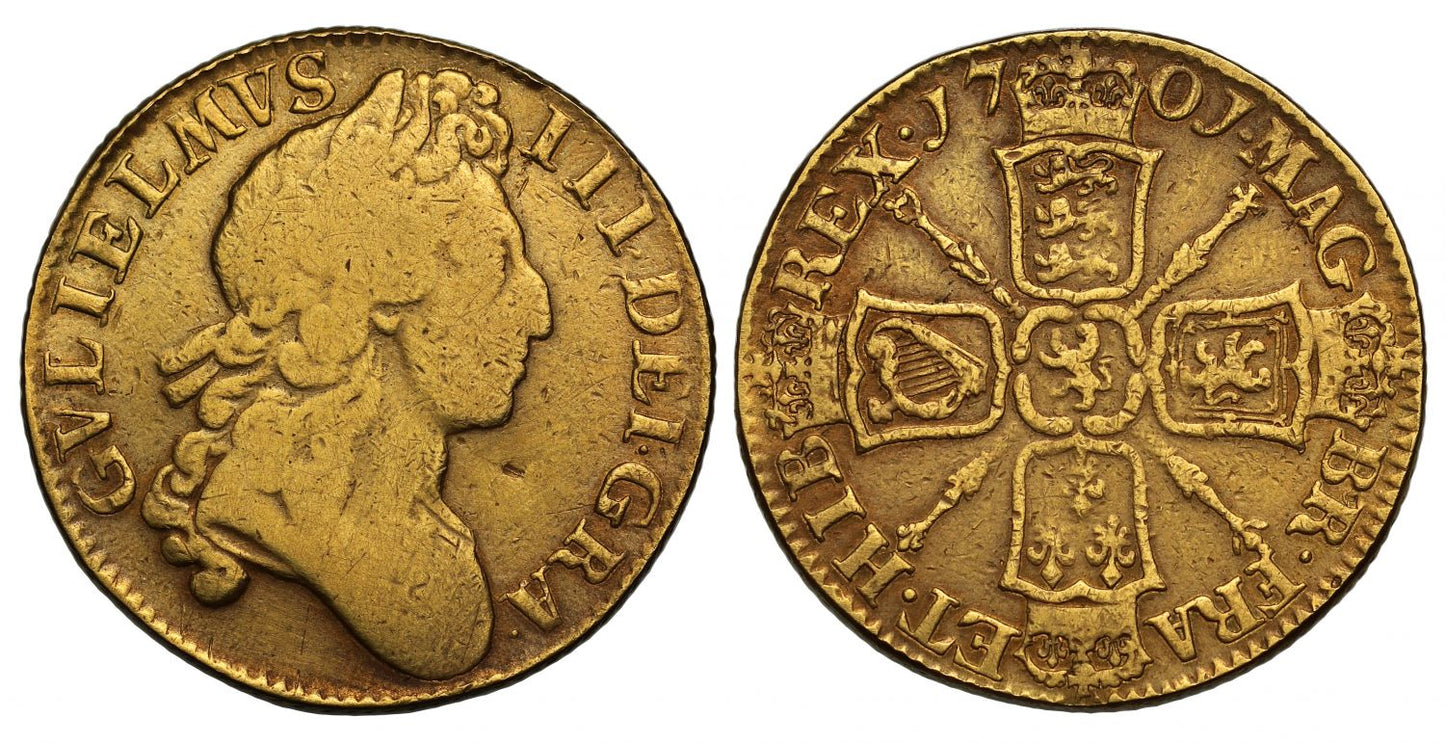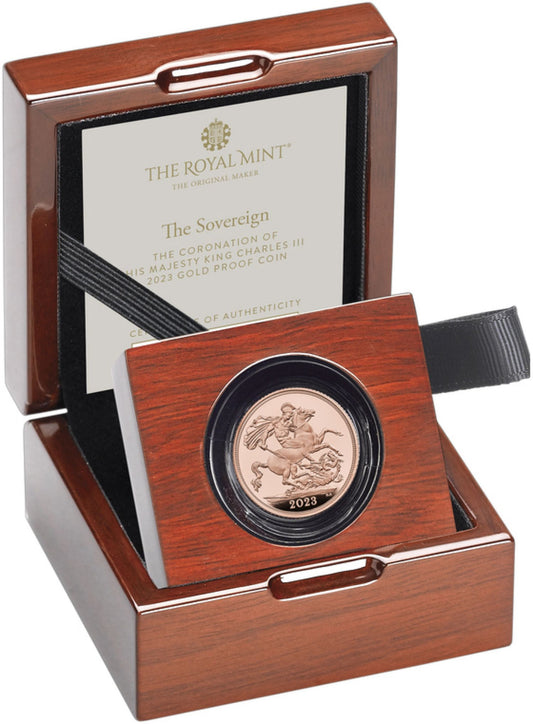FAQs
What makes a coin valuable?
I have coins to sell, what’s the next step?
How will my purchases be shipped?
What happens if I’m not entirely happy with my purchase?
William III 1701 Guinea, second bust, ornamental sceptres on reverse
William III (1694-1702), gold Guinea, 1701, ornamental sceptre handles, second laureate head right, Latin legend and toothed border surrounding both sides, GVLIELMVS. III. DEI. GRA., rev. crowned cruciform shields, seven strings to Irish harp, narrow crowns, emblematic sceptres in angles with ornamented handles, Lion of Nassau at centre, date either side of top crown, .MAG BR. FRA ET. HIB REX., weight 8.05g (Schneider 510; Farey 440; MCE 186; Bull EGC 426; S.3463).Toned, with multiple surface marks, almost fine.
The Latin legends translate as on the obverse "William the Third, by the Grace of God," and abbreviated on the reverse as "King of Great Britain, France and Ireland."
The gold output was very high in 1701 at £1,190,019 worth of gold coins produced across the four denominations of that year. Sir Isaac Newton was by now the Master Worker of the Mint since 1699 and had applied his mind to the problem of circulating foreign gold coin in the UK which was prevalent at this time with French Louis d'Or and Spanish Pistoles both circulating in commerce at 17/6d each when compared to a freshly minted Guinea at 21/6d. Newton tested the worn foreign coin and typically found it to be worth 17/1d and emphasised to the Treasury secretary that such coin was merely bullion and not official coin of the realm. A resulting Proclamation of 5th February 1701 brought the value of the foreign coin down to 17 Shillings, with the consequence that many were sent to the Mint for converting to current coin, and some £1,400,000 worth accounted for more or less the whole coinage of 1701 and 1702.
This would explain why the five guinea of this year is the most common for the whole denomination with two reverse varieties, with the two guineas and half-guineas perhaps the hardest denominations to find. The Guinea dated 1701 comes with two different busts of which this coin herewith is an example of the more commonly seen. There was also a small output of rare Royal African Company Guineas with the elephant and castle provenance mark dated 1701.
FAQs
What makes a coin valuable?
I have coins to sell, what’s the next step?
How will my purchases be shipped?
What happens if I’m not entirely happy with my purchase?













